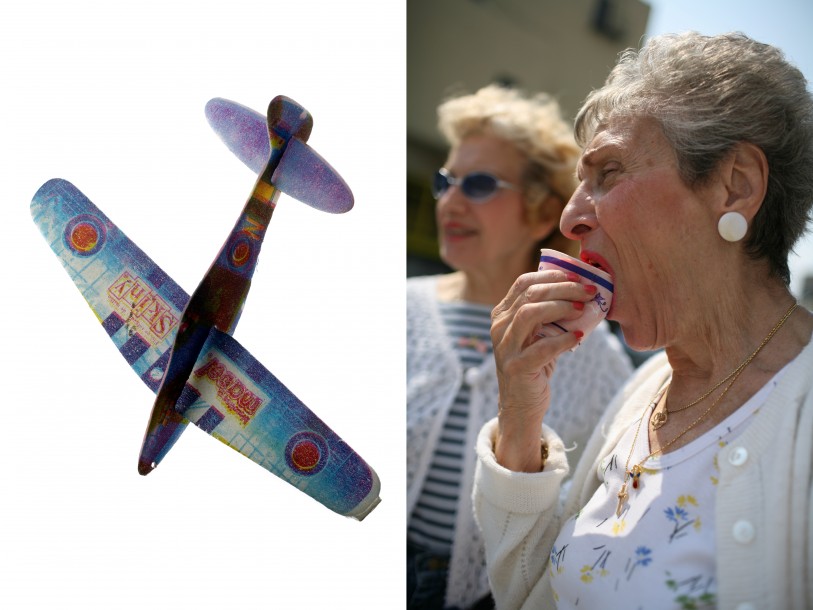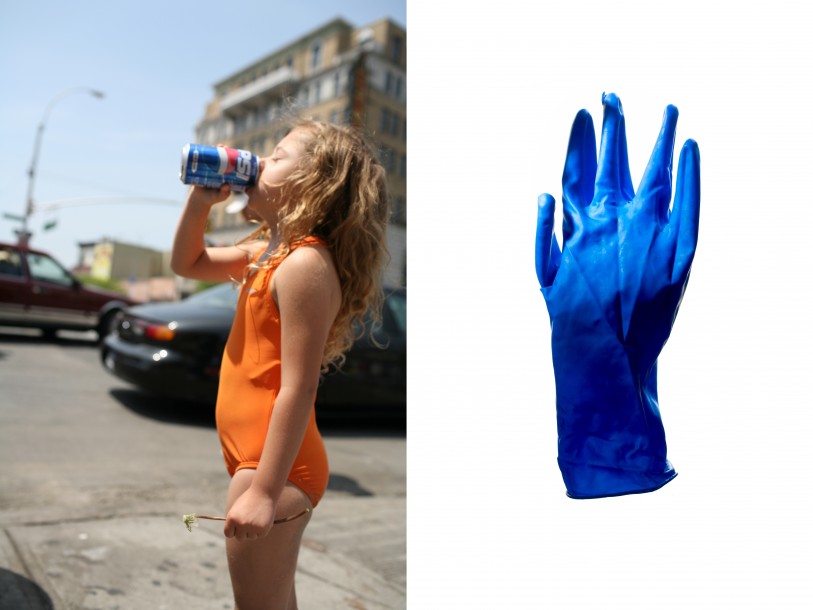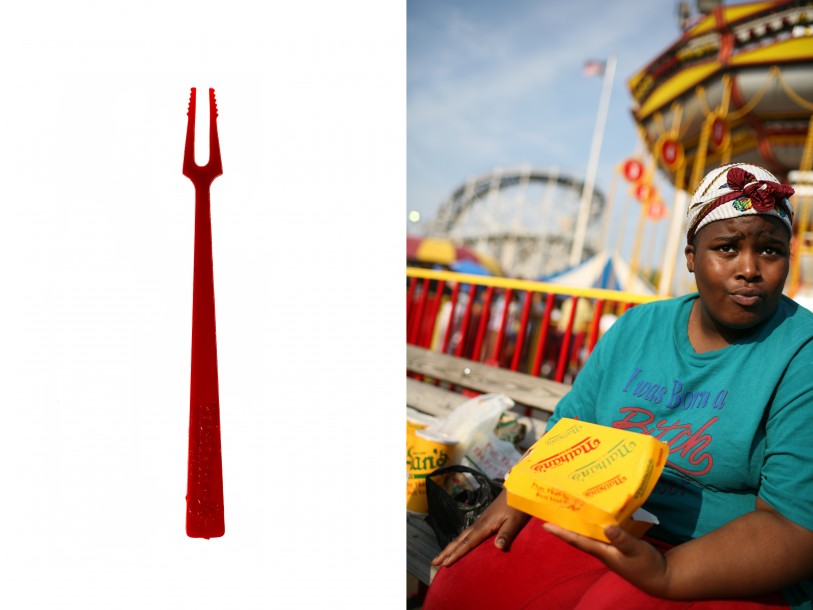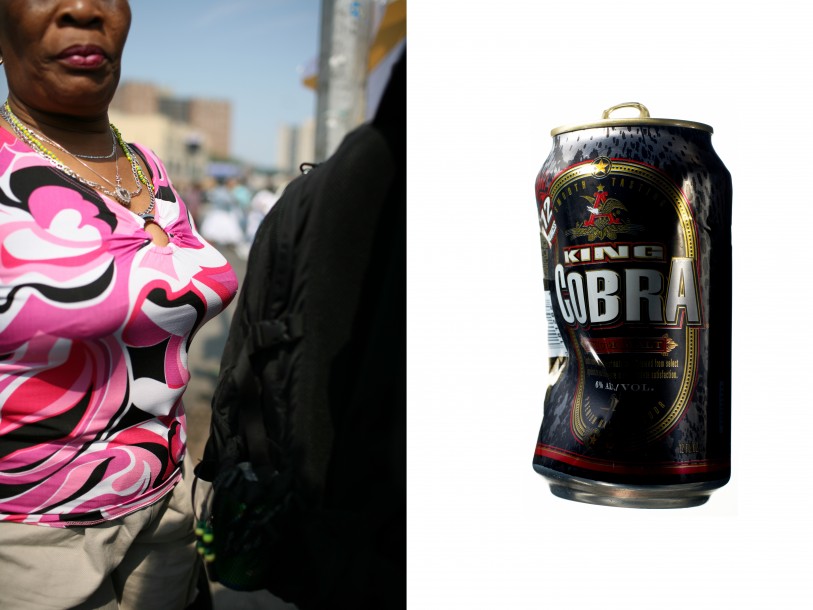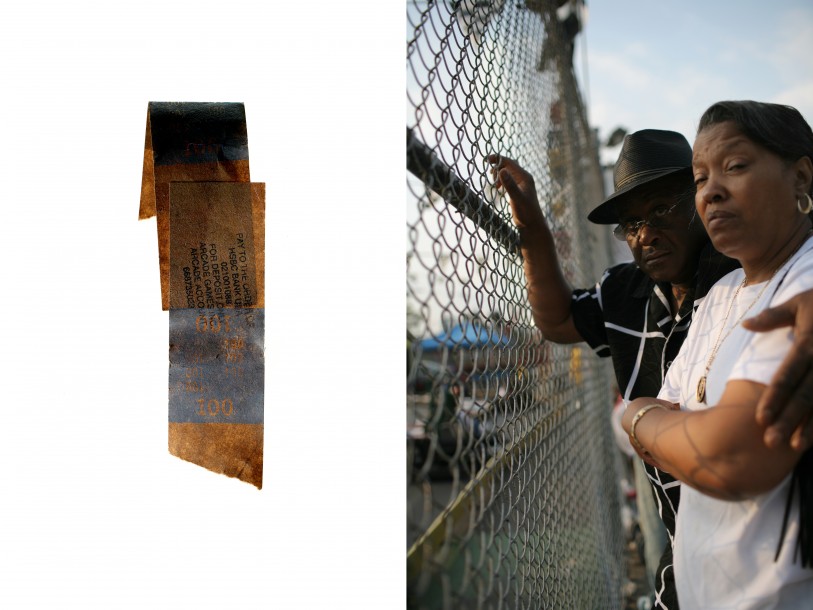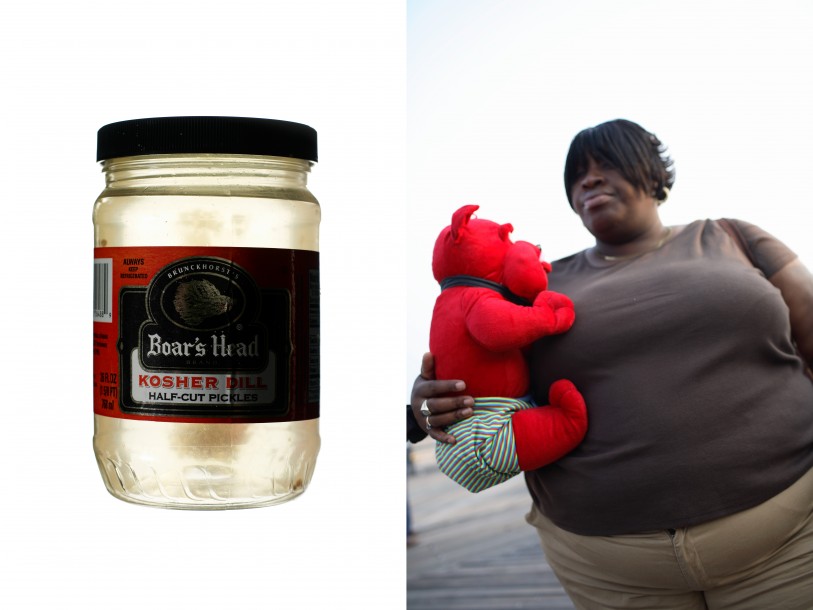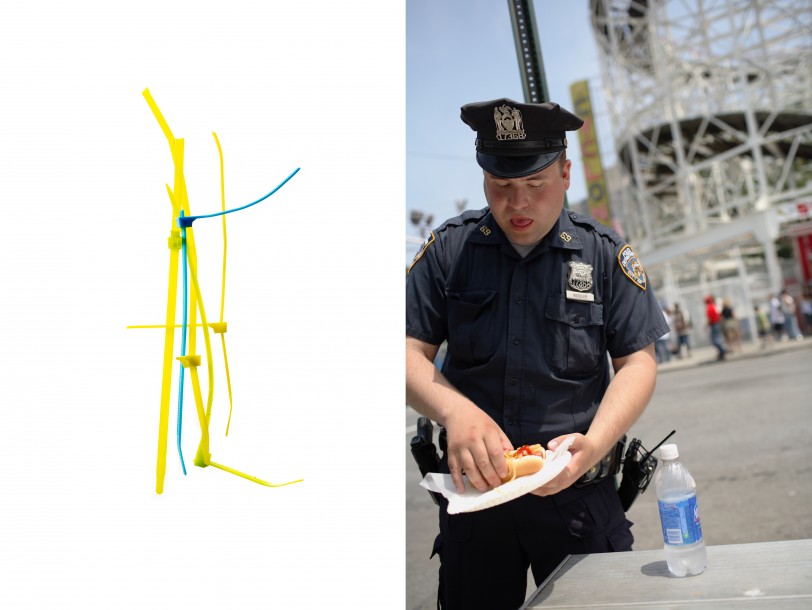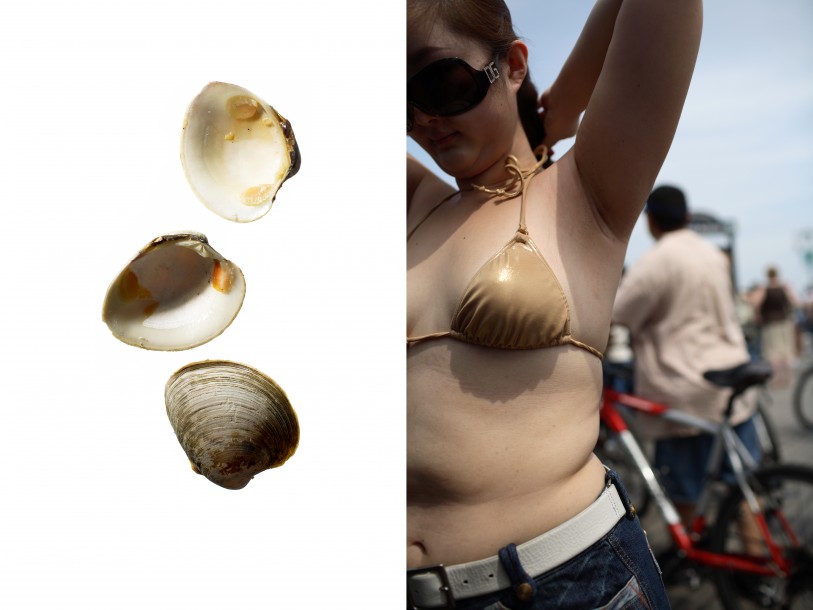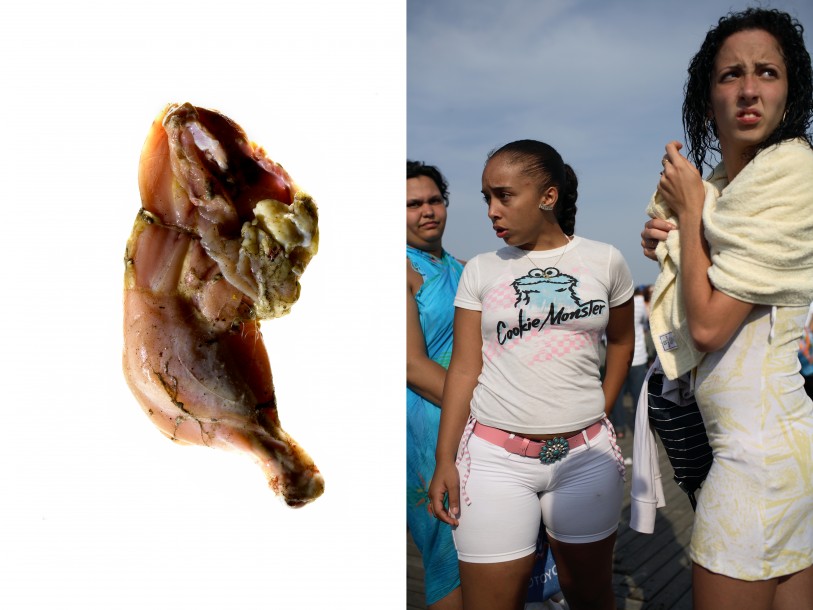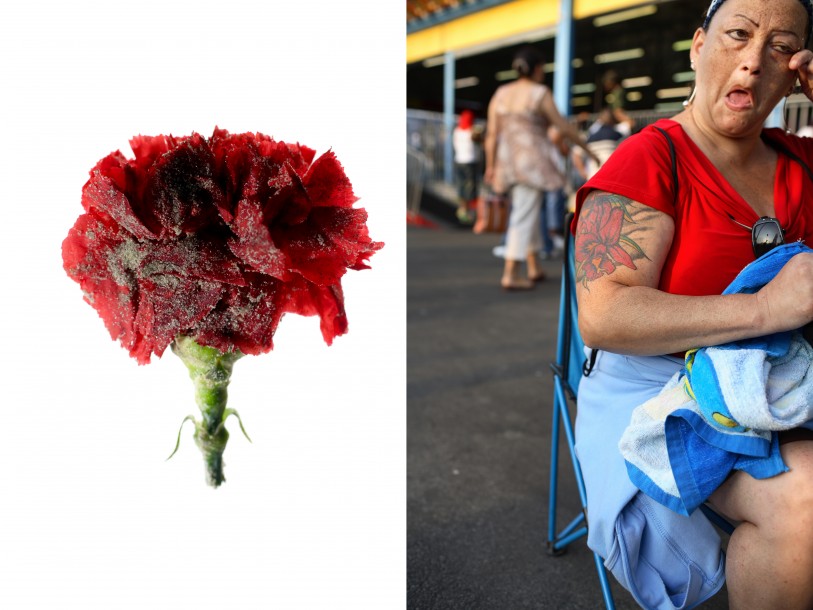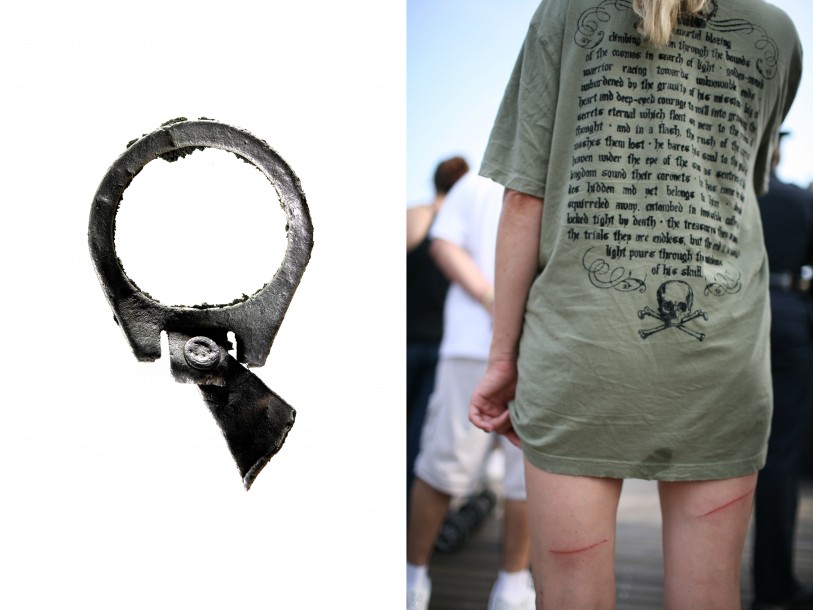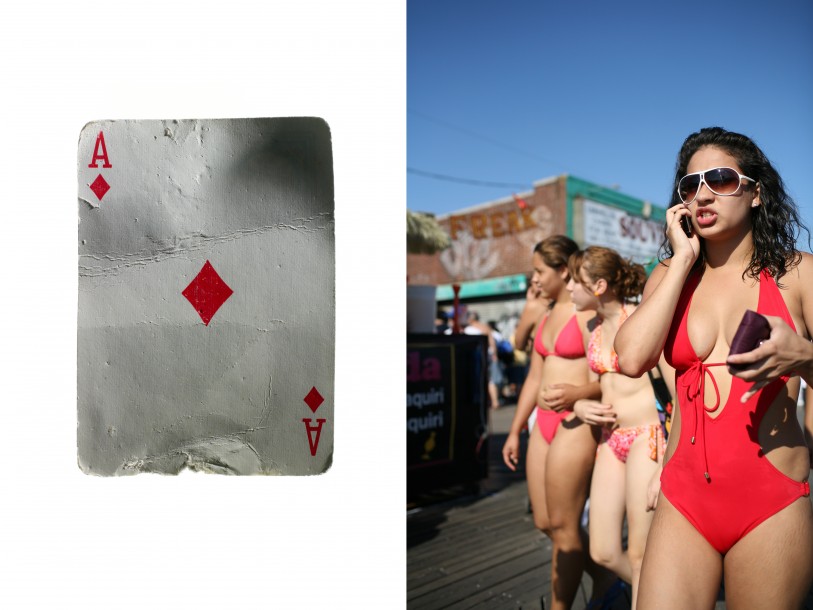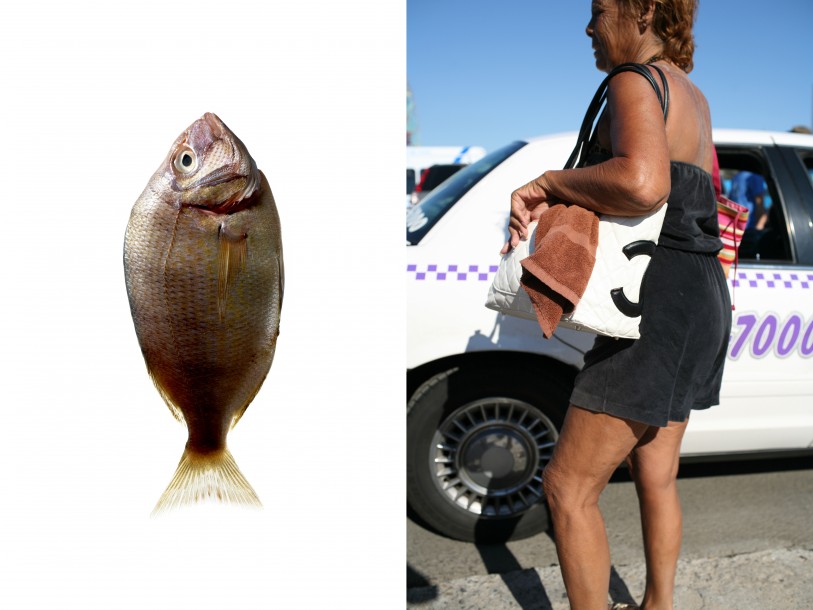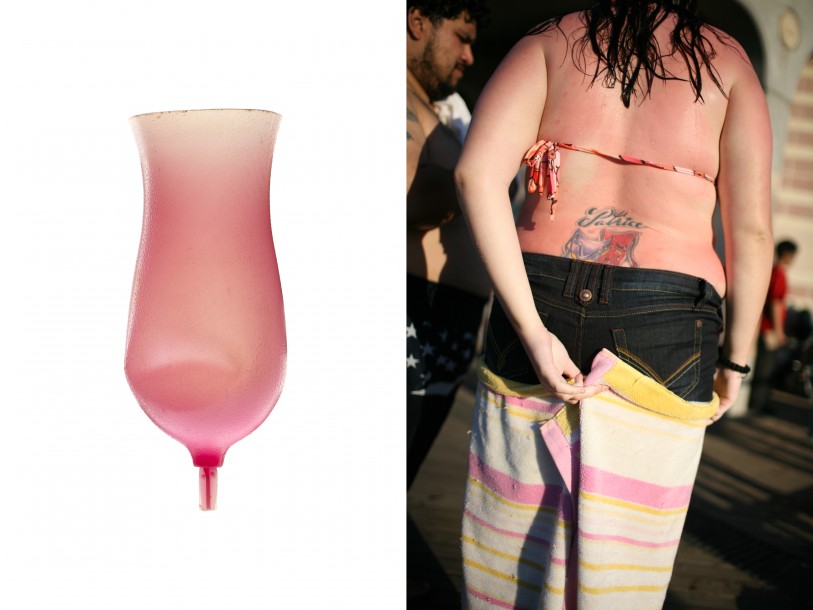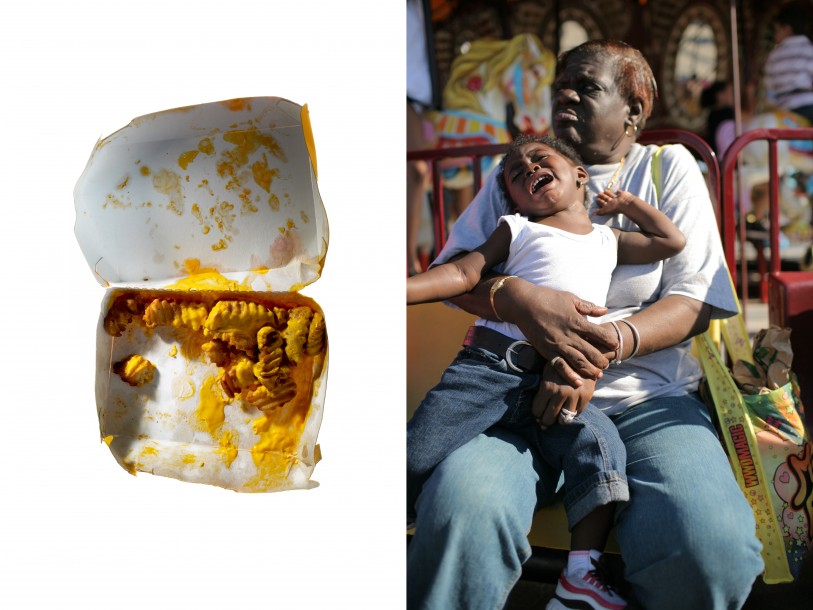Story
This project was born as a reaction to the famous picture of the Coney Island beach shot by Weegee in 1940, which shows an endless crowd on the beach, most of which is facing the photographer, some are even waving. I was interested in going into the crowd and isolating the individuals that compose this mass, to look closely at the atoms which, put together, create the matter.
In order to enter what is usually a sphere of privacy i "shot from the hip" (in actuality, more often from my camera resting on my crossed arms), and was thus able to be so very close to the people in the images, without them reacting to the photographic act of taking a camera to my eye.
Feeling that this gallery of portraits told only half the story i asked my friend and photographer Johnny Miller, if he might have an idea of how he could document this place in his own style. We ended up agreeing on the idea of the "discarded object", which he found on the ground, in the sand or in trash cans and later photographed in his studio.
Is it possible to show a place without representing its architecture, its physical appearance? This project is a attempt to do so: show Coney Island, not through what it looks like, but through the people that make it what it is, and their consumption habits.
In order to enter what is usually a sphere of privacy i "shot from the hip" (in actuality, more often from my camera resting on my crossed arms), and was thus able to be so very close to the people in the images, without them reacting to the photographic act of taking a camera to my eye.
Feeling that this gallery of portraits told only half the story i asked my friend and photographer Johnny Miller, if he might have an idea of how he could document this place in his own style. We ended up agreeing on the idea of the "discarded object", which he found on the ground, in the sand or in trash cans and later photographed in his studio.
Is it possible to show a place without representing its architecture, its physical appearance? This project is a attempt to do so: show Coney Island, not through what it looks like, but through the people that make it what it is, and their consumption habits.
